Indian Space Progress #11: Reviewing an incredible year for ISRO
2023 was a year of multiple landmark developments for ISRO, to the point where it visibly improved perceptions people and space agencies worldwide had of India’s space capabilities. ISRO, though, as usual, isn’t keen on highlighting these advances on any of their channels. Such lack of contextualized information about India’s space program is partly why this monthly Indian Space Progress newsletter exists in the first place. And so I’ve collated below ISRO’s notable developments across 2023 with links to know more details, each of which has more contextual clicks for your web diving pleasure.
[Note: Clicking on images below will also take you to the respective stories]
Key launches
In February, ISRO conducted the first successful orbital flight of its new, homegrown SSLV rocket. With a modular design and rapid assembly times, the SSLV is a unique addition to ISRO’s rocket fleet, and is set to enter the commercial small satellite market to compete with the likes of Electron.
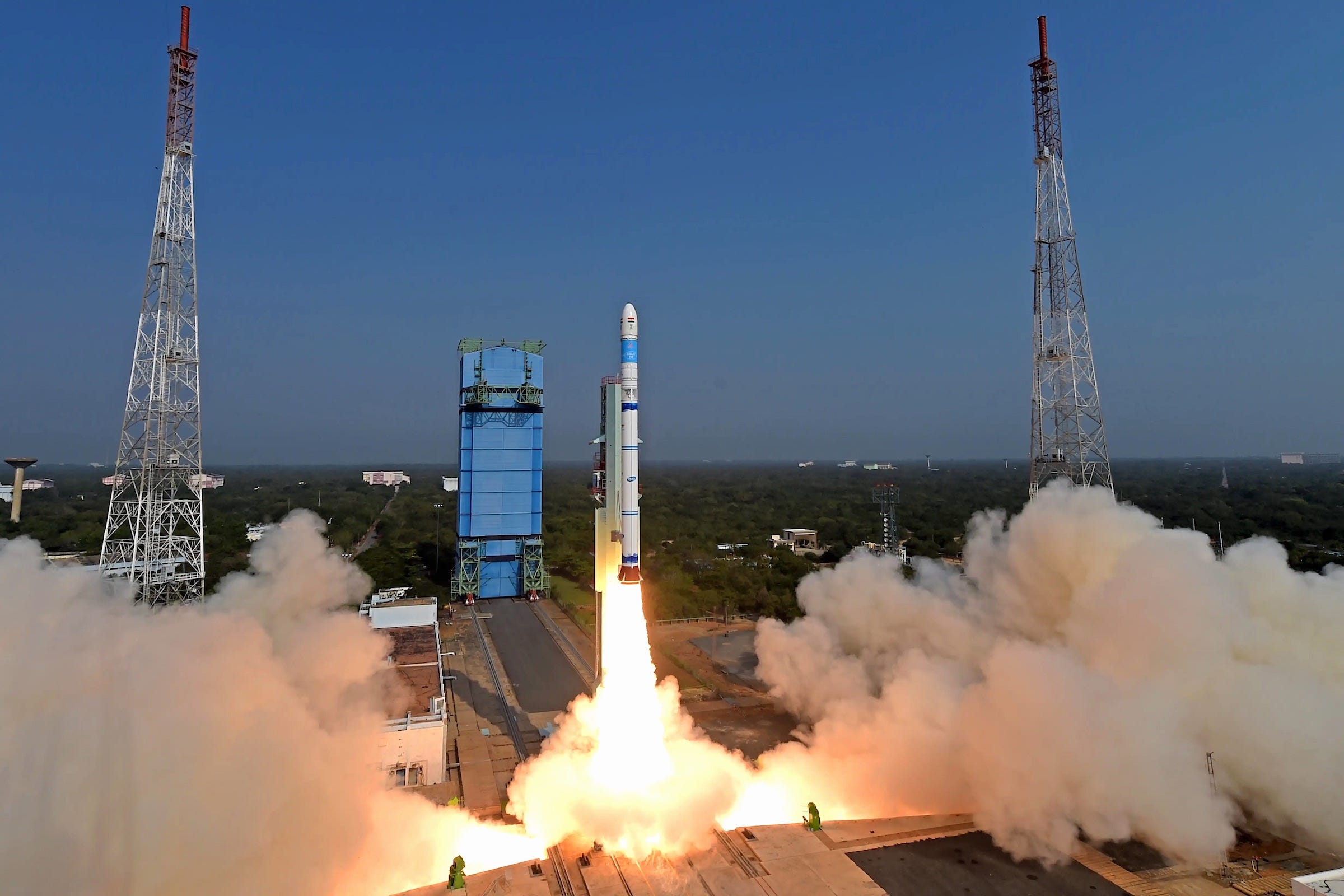
In March, the GSLV Mk III rocket commercially launched and deployed its second batch of 36 OneWeb satellites. While ISRO’s rockets exist first and foremost to give India independence from foreign launchers, they are also offered commercially once operational for the nation’s own needs. The MK III’s orbital loft of OneWeb satellites aptly illustrates this by giving ISRO a small but definitive place in the medium-lift global space launch market.
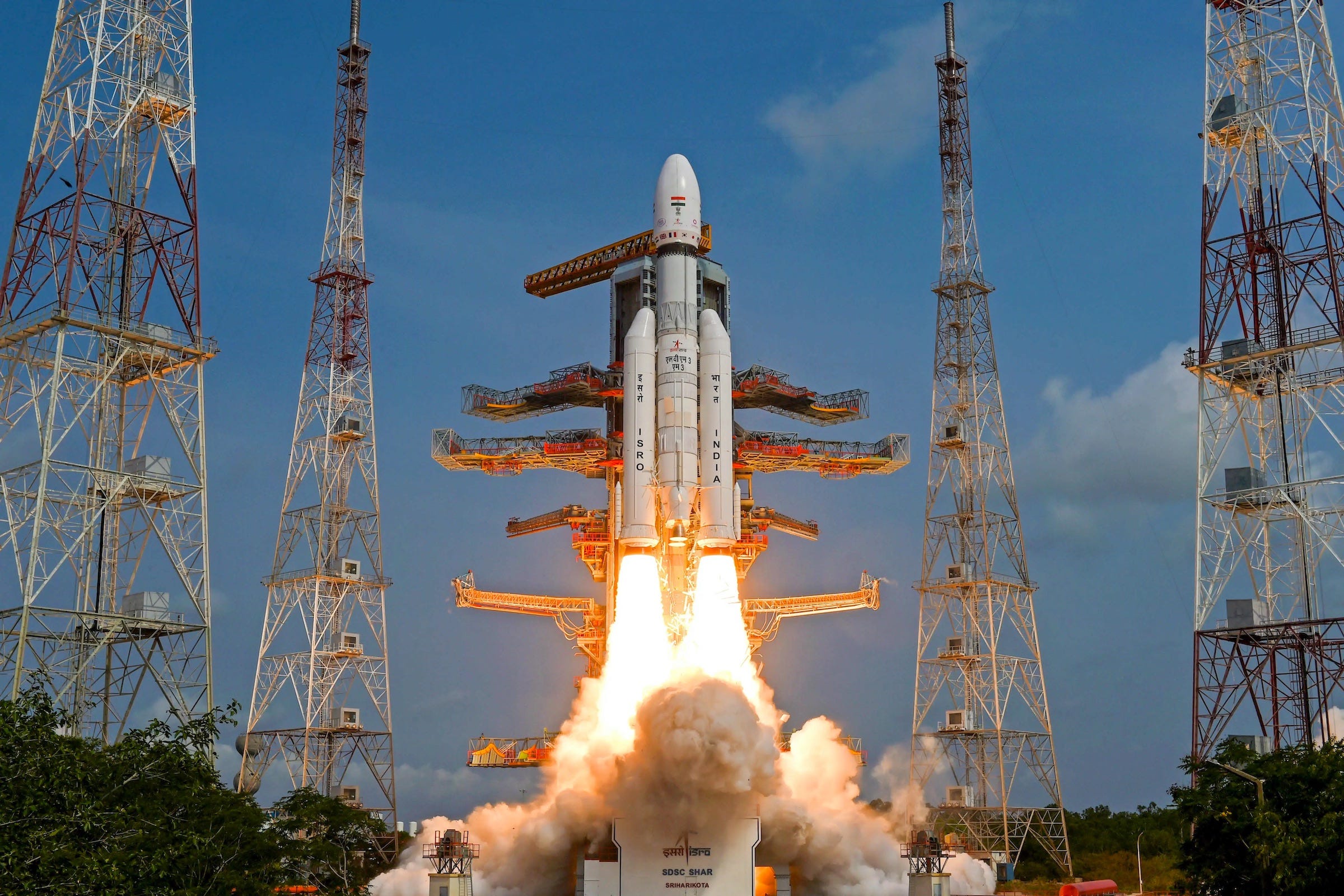
In May, a GSLV Mk II successfully launched and deployed the NVS-01 navigation satellite, marking the rocket’s return to flight after its cryogenic third stage had failed on its last mission in 2021. And, with NVS-01 sporting GPS interoperability as well as an indigenous atomic clock, it provided a much needed boost to India’s regional navigation service.

Technology building
In April, ISRO successfully carried out an autonomous runway landing demonstration of an indigenously developed spaceplane, whose larger version will be part of a future Reusable Launch Vehicle.
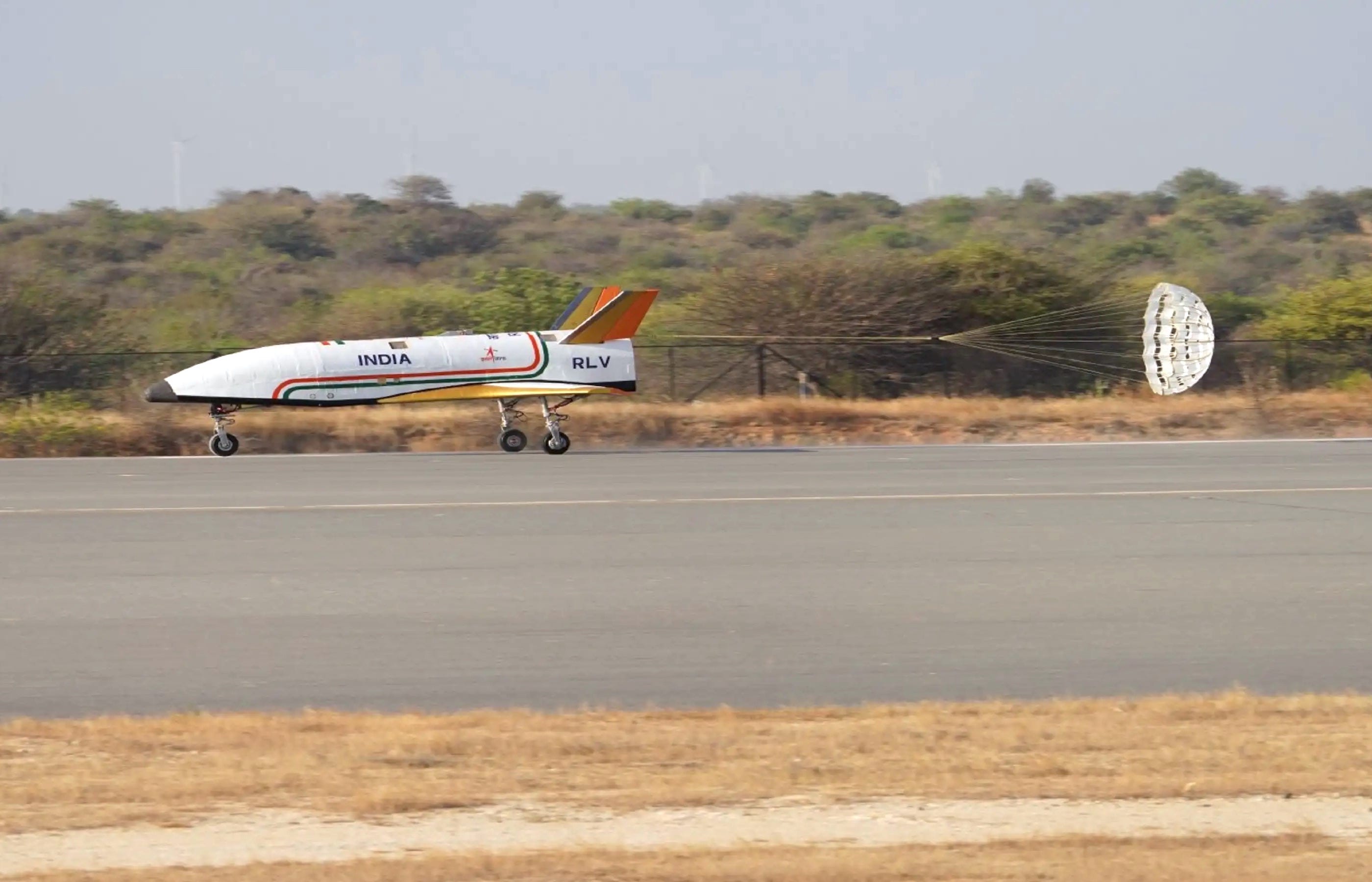
With the goal of flying Indian astronauts on the ambitious Gaganyaan mission mid-decade, ISRO continued finishing work on many of its key enabling technologies this year as well. This notably included conducting a successful abort test in October, qualifying the crew module’s propulsion system in May, and in April human-rating the liquid-fueled Vikas engine—two of which power the GSLV Mk III’s core stage.
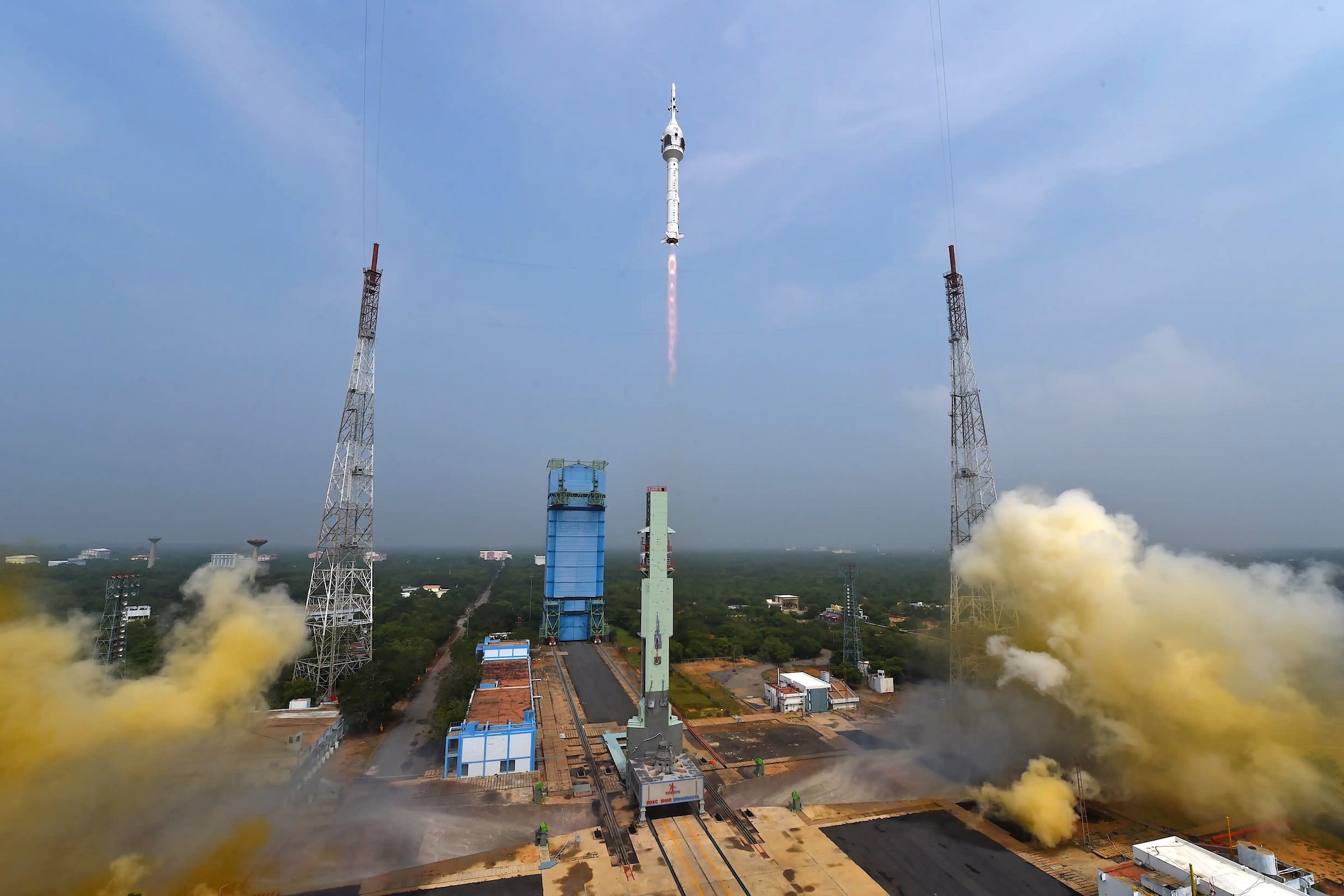
Policy
As part of an unprecedented set of broad-sweeping, collaborative science & technology Indo-US agreements in June, India signed the US-led Artemis Accords. Since India is one of the few nations with independent and frequent access to space and the Moon, the move has big implications and opportunities for both NASA and ISRO to better explore our Moon as well as shape lunar governance frameworks.
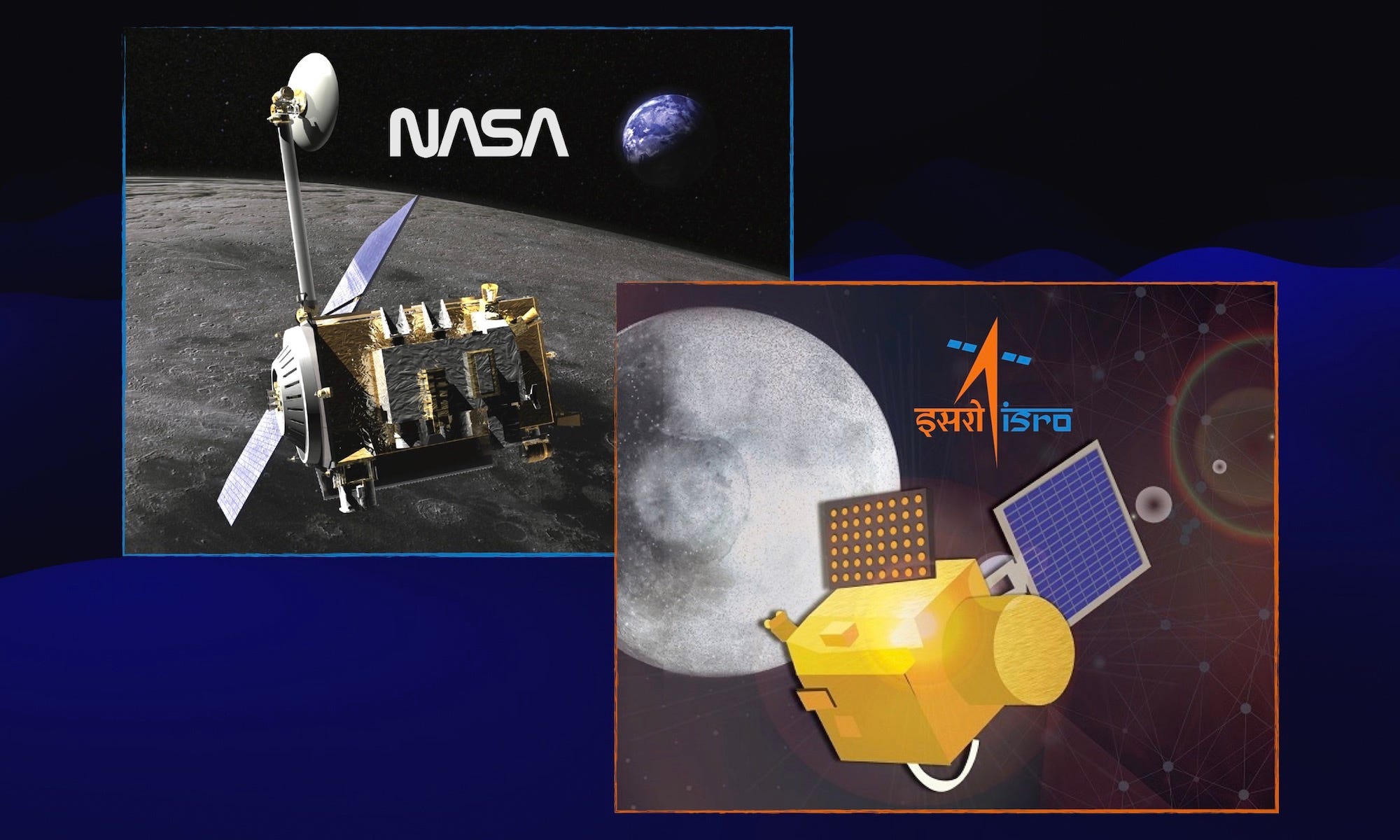
In April, the Government of India put out the country’s much-awaited new space policy, which formally encourages Indian private businesses to pursue a whole spectrum of space capabilities, calls for repurposing ISRO to double down on advanced space research and cutting-edge technology development, and states for the first time some of India’s novel space ambitions such as utilizing space resources. While the policy’s first draft is crude, the consensus among all stakeholders is that it’s a good start.
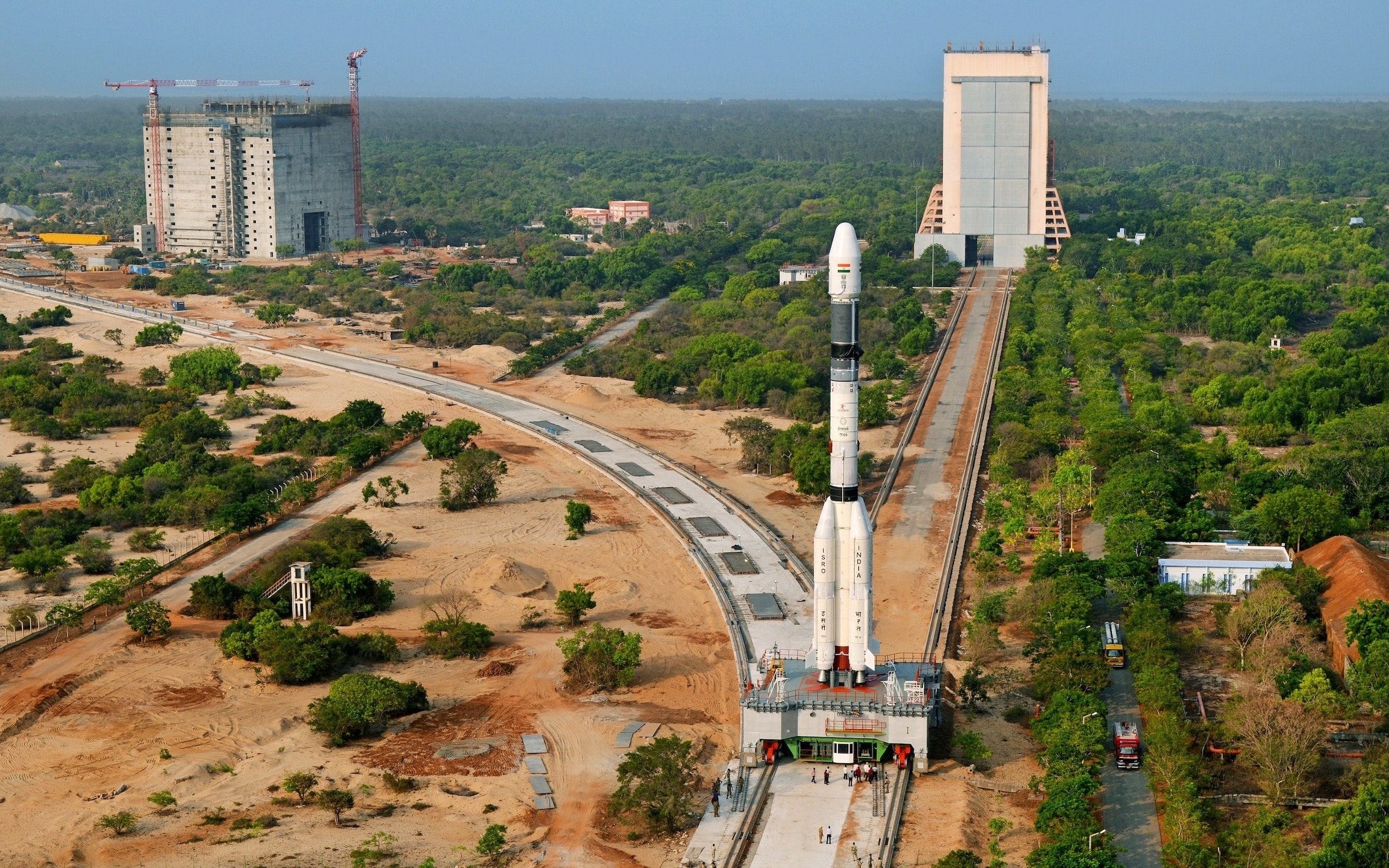
A big thank you to the Takshashila Institution, SkyServe, KaleidEO, Gurbir Singh and Arun Raghavan for sponsoring this month’s Indian Space Progress roundup.
Chandrayaan 3
On August 23, ISRO’s Chandrayaan 3 robotic lander triumphantly touched down on the Moon, making India only the fourth country to achieve the feat of a soft lunar landing. The mission’s nominal execution and its team’s meticulous approach is what resulted in Chandrayaan 3 keeping the global momentum for the Moon going by feeding into the frenzy of sending robotic missions to Luna.
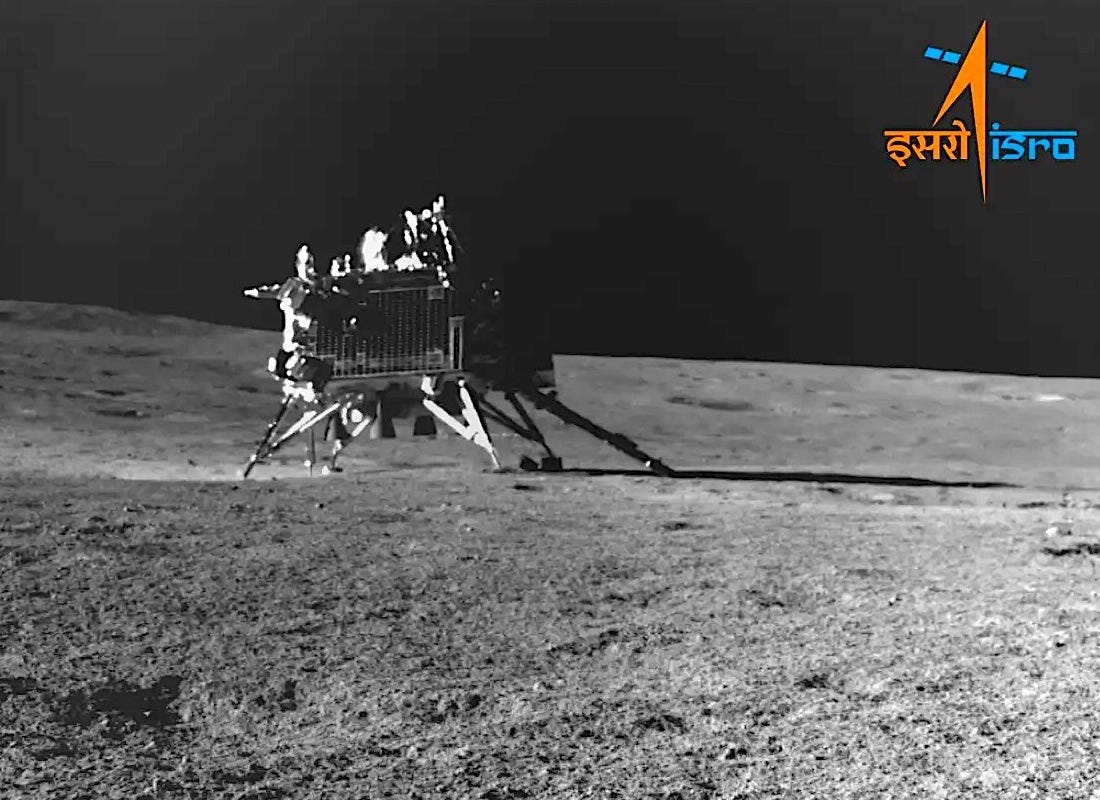
Fun fact: Chandrayaan 3’s landing ellipse spanned 4 by 2.5 kilometers, and it touched down ~350 meters away from the target spot, making it the second most precise robotic planetary landing to date.
Science
In September, ISRO launched its first space-based solar observatory called Aditya-L1 to uniquely observe our star with its advanced set of indigenously developed instruments. To that end, it follows AstroSat (India’s first dedicated space telescope) and Chandrayaan 1 (India’s first planetary mission) in setting a foundation for the country’s growing space science abilities and ambitions.
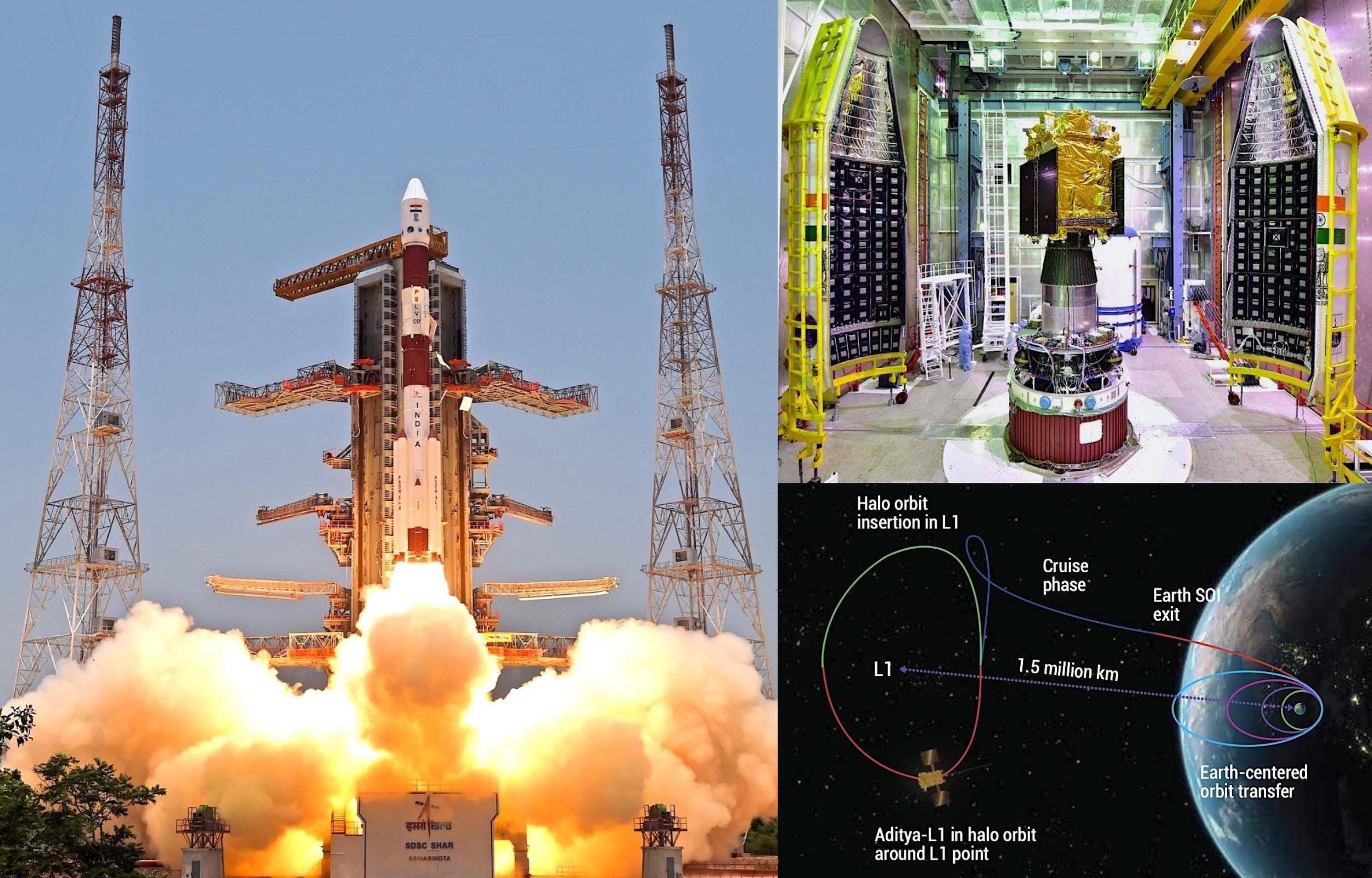
[Not ISRO but relevant for India] In April, the Indian government approved the construction of a $320 million gravitational wave detection facility called LIGO-India. When completed end of decade, astrophysicists expect the LIGO network’s ability to locate the sources of detected gravitational wave events to improve tenfold. This is a big moment for Indian science, especially since the country hasn’t yet built a state-of-the-art scientific facility of this scale in its home turf.
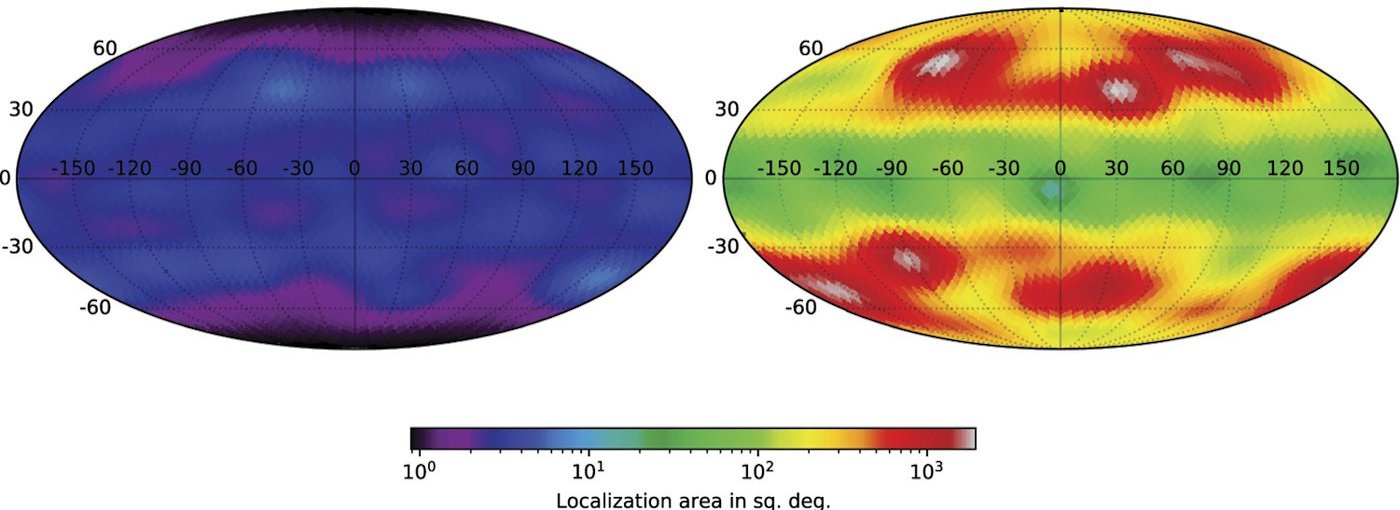
Perception versus reality
Like every year, a lot of the coverage and projections of India in space continued to confound reality—both from within the country and outside. Here are three such things I’d like to note:

Even as we celebrate Chandrayaan 3 and ISRO’s newly announced ambition of sending an Indian to the Moon by 2040, having more than 200 million Indian school students learn about Chandrayaan 3 mixed with mythology is a worrying development:
Given that Chandrayaan 3 attempted its lunar landing on August 23, and that Russia launched Luna 25 on August 11 seemingly out of the blue for a targeted August 21 landing attempt, many people and media publications worldwide boldly framed it as a race—notably without backing it up with due rationale. So was Russia trying to beat India with Luna 25? No:
If you love my coverage of Indian space, all of which is free to access by everyone in order to serve related communities and Indian space enthusiasts worldwide, kindly consider sponsoring it as an individual or an organization. 🚀🇮🇳
